
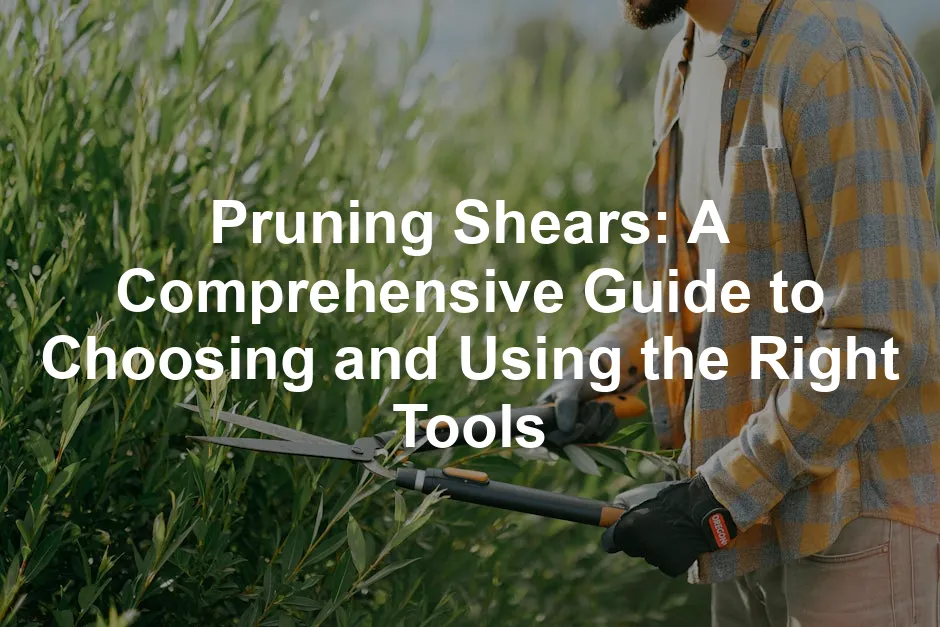
Pruning Shears: A Comprehensive Guide to Choosing and Using the Right Tools
Introduction
Pruning shears are vital for any gardener. They help maintain plant health and improve aesthetics. With so many options available, choosing the right pair is essential. The right shears make pruning tasks easier and more effective. Whether you’re cutting back overgrown shrubs or harvesting fruits, having the right tool can make all the difference.
Speaking of the right tools, have you considered upgrading your gardening arsenal? A pair of professional pruning shears can be a game-changer. They provide clean cuts and reduce the risk of plant damage, ensuring your garden flourishes like never before!

Summary and Overview
Pruning shears, also known as secateurs, are essential tools for gardeners. They are used to cut branches, stems, and foliage, promoting healthy plant growth. Different types of pruning shears cater to various gardening needs. Bypass pruners have two blades that slide past each other, mimicking scissors. They work well for live plants and delicate stems. Anvil pruners feature a single blade that cuts against a flat surface, making them ideal for thicker or dead branches. Ratchet pruners utilize a mechanism that allows for easier cutting, perfect for those with less hand strength.
Proper pruning is crucial for plant health. It encourages new growth, removes dead or diseased material, and shapes plants for better aesthetics. Using the right pruning shears enhances your gardening efforts. With the right tools, you can enjoy a vibrant and healthy garden. In the upcoming sections, we will cover different types of pruning shears, their features, best practices for use, and maintenance tips to ensure they last for years.

Types of Pruning Shears
When it comes to pruning shears, knowing your options can enhance your gardening experience. Each type offers unique features and benefits tailored to specific tasks. Let’s break them down.
Bypass Pruners
Bypass pruners resemble a pair of scissors. They feature two blades that slide past one another. This design allows for clean cuts, making them ideal for live plants. The sharp blades create smooth, precise incisions, reducing damage to the plant.
These pruners excel at trimming green stems and branches. They are perfect for tasks like shaping hedges, deadheading flowers, or harvesting fruits. The clean cuts promote faster healing for plants, leading to healthier growth. If you often prune rose bushes or delicate shrubs, bypass pruners are a must-have. For those who want to invest in quality, check out this high-quality bypass pruner that can make your gardening tasks a breeze!

Anvil Pruners
Anvil pruners work differently. They consist of a single sharp blade that cuts against a flat surface, known as the anvil. This design is particularly effective for cutting through tougher materials.
They are highly recommended for thicker or dead branches. If you need to clear away overgrown wood or cut back old growth, anvil pruners shine. Their sturdy construction allows for powerful cuts, making quick work of woody stems. However, they may not be the best choice for fresh, green growth, as they can crush delicate stems. For those tougher jobs, consider this heavy-duty anvil pruner that can handle the toughest branches!
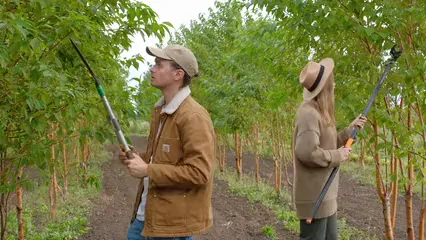
Ratchet Pruners
Ratchet pruners incorporate a unique mechanism that allows for easier cutting. They are designed for individuals who may struggle with traditional pruning shears. The ratchet system provides extra leverage, making it easier to cut through tough materials.
These pruners are ideal for those with limited hand strength or arthritis. They work well for cutting thicker branches without requiring excessive hand strength. This means you can tackle tough pruning tasks without fatigue. If you’re looking for something ergonomic, check out these ergonomic ratchet pruners that can save your hands!

Key Differences and Considerations
Understanding the differences between these types is essential. Bypass pruners are best for live, green growth. Anvil pruners excel with dead or thicker branches. Ratchet pruners provide assistance for those needing extra power.
When choosing the right pruning shears, consider your gardening tasks. Each type has its pros and cons, so think about what you’ll be cutting most often. With the right tools, your gardening efforts can be more enjoyable and effective. And for a little extra assistance, don’t forget to check out this pruning shears tool set that has everything you need!
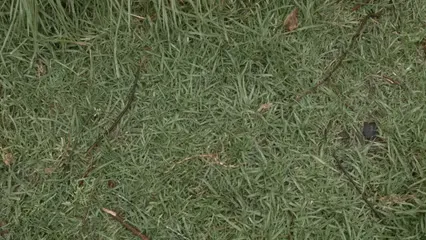
Features to Consider When Choosing Pruning Shears
When selecting pruning shears, several features are crucial for ensuring you make the right choice. Here’s what to look for:
Blade Material
The material of the blades impacts durability and sharpness. Common options are stainless steel and carbon steel.
Stainless steel blades resist rust and corrosion, making them ideal for damp environments. They require less maintenance, which is a plus for busy gardeners. However, they might not hold an edge as long as carbon steel.
On the other hand, carbon steel blades are sharper and can be honed to a finer edge. They excel in cutting through thicker branches. However, they need regular maintenance to prevent rust. If you’re looking for long-lasting performance, consider investing in carbon steel pruning shears that promise durability and sharpness!

Handle Design
An ergonomic handle is vital for comfort, especially during long pruning sessions. Look for designs that fit naturally in your hand, reducing strain on your fingers and wrists.
Materials matter, too. Plastic handles are lightweight and often more affordable, but metal handles provide additional strength and durability.
Some models feature rubber grips for added comfort, reducing slippage during use. A well-designed handle will improve efficiency and make your gardening tasks more enjoyable. For added comfort, consider this ergonomic pruning shear that will keep your hands happy!

Cutting Capacity
Cutting capacity refers to the maximum diameter of branches your shears can cut. This feature is crucial for selecting the right tool for your plants.
Bypass pruners generally handle branches up to ¾ inch thick, while anvil pruners can manage thicker branches, often around 1 inch or more.
Knowing the cutting capacity helps you pick the right shears for your specific gardening needs. If you plan to prune various plants, consider a versatile option. For those who want a tool that can handle it all, look into this versatile pruning shear that takes the guesswork out of your gardening!

Weight and Size
The weight of your pruning shears can significantly impact comfort during use. Heavier shears may feel sturdy but can cause fatigue during prolonged tasks.
Lightweight options are easier to handle but may compromise on strength. Consider your gardening habits. If you’re frequently pruning, lighter shears may be more beneficial for extended use.
Additionally, the size of the shears should fit your hand comfortably. Choosing the right size prevents strain and allows for better control during pruning. For a lightweight option that doesn’t skimp on performance, check out these lightweight pruning shears!
When looking for pruning shears, keep these features in mind. A good balance of blade material, handle design, cutting capacity, and weight will enhance your gardening experience. Choose wisely, and your plants will thank you!
Best Practices for Using Pruning Shears
Using pruning shears effectively can lead to healthier plants and a more beautiful garden. Here are some best practices to consider.
Proper Techniques for Pruning
Making clean cuts is essential for plant health. Always ensure your pruning shears have sharp blades. Dull blades can crush stems, causing damage. When cutting, aim for a 45-degree angle. This angle promotes quicker healing and reduces the risk of disease.
Cut just above a bud or a branch junction. This encourages new growth in the right direction. For larger branches, make a notch cut first. It prevents tearing the bark, which protects the plant. Remember, practice makes perfect. The more you prune, the better you’ll become at recognizing the best techniques. And when you’re ready to take your skills to the next level, consider these pruning shears for beginners that come with a guide!
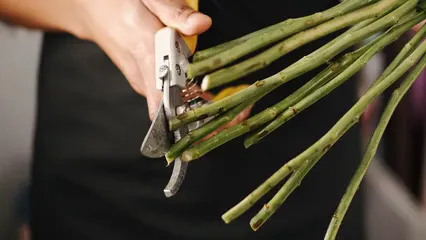
Timing Your Pruning
Timing is key for effective pruning. Different plants have specific needs throughout the year. For example, spring-flowering shrubs should be pruned right after they bloom. This ensures you don’t cut off the buds for next year’s flowers.
On the other hand, summer-flowering plants can be pruned in late winter or early spring. This timing encourages new growth and more flowers. Deciduous trees are best pruned in late winter when they are dormant, while evergreens can be pruned in early spring. Always check specific plant guidelines for the best results. A handy resource for plant care is this plant care guide that can help you stay on track!

Safety Precautions
Safety should always come first when using pruning shears. Wear gloves to protect your hands from cuts and blisters. Safety goggles can shield your eyes from debris. Always cut away from your body, ensuring better control of the tool.
Be mindful of your surroundings. Clear any obstacles before you start pruning. If you’re working on a ladder, make sure it’s stable. Finally, always store your shears in a safe place. This prevents accidents and keeps your tools in good condition for future use. For added safety, consider investing in a pair of gardening gloves that offer protection and grip!

Following these best practices can enhance your gardening experience. With clean cuts, proper timing, and safety measures, you’ll enjoy a thriving garden while minimizing risks. Happy pruning!
Maintenance and Care for Pruning Shears
Proper maintenance of your pruning shears is essential for their longevity and performance. Regular care ensures clean cuts and promotes healthy plant growth. Let’s break down the key aspects of maintaining your shears.
Cleaning
After each use, it’s vital to clean your pruning shears. Start by removing any plant debris. This prevents sap and dirt from building up, which can harm the blades. Use a damp cloth to wipe down the blades and handles.
Next, disinfect the shears. A simple mixture of water and bleach works well. Use a 10% bleach solution to soak the blades for a few minutes. Rinse thoroughly and dry completely to prevent rust. Keeping your tools clean reduces the risk of spreading disease between plants. For a great cleaning kit, check out this tool cleaning kit that keeps your gear in top shape!
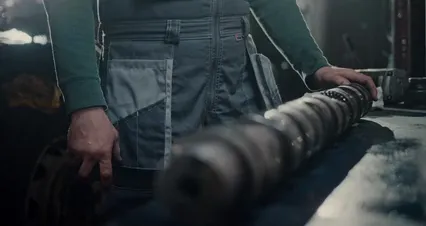
Sharpening
Sharp blades are crucial for effective pruning. Dull blades can crush stems, leading to damage and disease. Inspect your shears regularly for sharpness. If they feel dull, it’s time to sharpen them.
You can use a sharpening stone or a specialized sharpening tool. Hold the blade at a 20-degree angle and slide the stone along the edge. Repeat this process for both sides of the blade. Aim to sharpen your shears at least once a season, or more frequently if you use them often. For those who prefer a quick solution, consider this pruning shears sharpener that makes the task easier!

Storage
Storing your pruning shears correctly extends their lifespan. After cleaning and sharpening, make sure they are completely dry. Store them in a cool, dry place. Hanging them on a wall or placing them in a tool bag prevents accidental damage.
Avoid keeping them in damp areas, as moisture can lead to rust. If your shears come with a protective cover, use it to safeguard the blades. Proper storage keeps your tools in top condition and ready for use. For a great storage solution, consider this tool storage bag that keeps everything organized!
Regular maintenance is key to ensuring your pruning shears perform their best. By cleaning, sharpening, and storing them correctly, you’ll prolong their life and enhance your gardening experience. Remember, well-maintained tools contribute significantly to a thriving garden!
For more information on how to maintain your garden tools, check out these best gardening tools for blue peter pan agapanthus maintenance.
Please let us know what you think about our content by leaving a comment down below!
Thank you for reading till here 🙂
All images from Pexels



